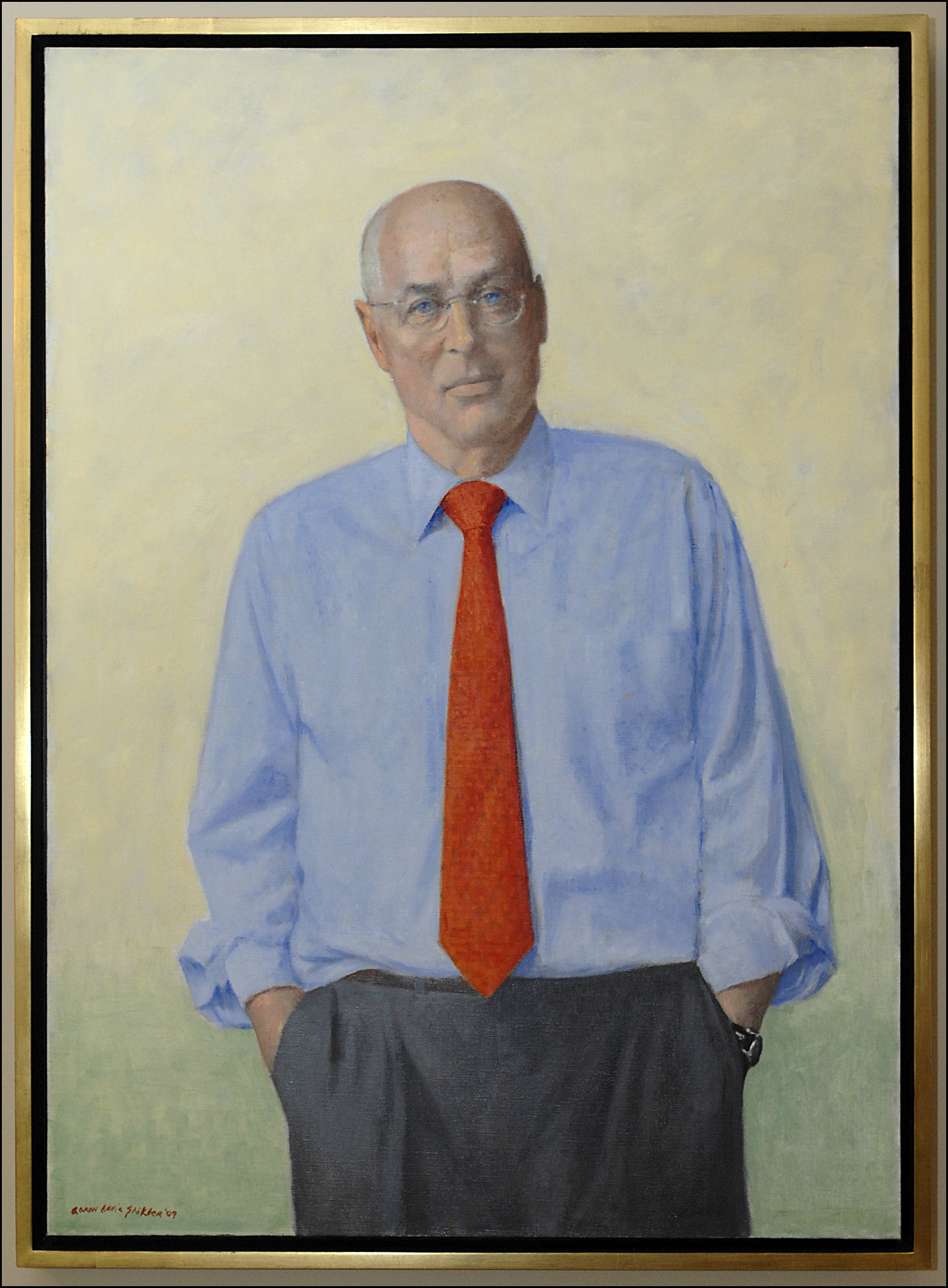Secretary Henry M. Paulson, Jr. led President George W. Bush’s economic team in designing and coordinating the successful domestic and international response beginning in 2008 to the greatest financial crisis since the Great Depression. His courage and decisiveness helped protect the United States financial system from collapse, staving off an economic catastrophe that might have well have seen unemployment reach the level last recorded in the 1930s.

44 x 32 x 2 7/16”
Secretary Paulson arrived at Treasury in July 2006 well prepared for the challenges he would face. He came from a 32-year career in finance with a leading global investment bank, Goldman Sachs, where he served eight years as Chairman and CEO. Paulson assembled a team of experienced professionals and reinstituted regular meetings of the President’s Working Group on Financial Markets. The coordinated efforts of the PWG’s financial regulators would later prove critical to the U.S. government’s ability to prevent the collapse of the financial system.
Secretary Paulson’s non-partisan leadership enabled him to convince Congress to grant the unprecedented emergency powers necessary to stem the crisis. Looking to the future, Secretary Paulson and his Treasury team crafted a regulatory blueprint to fix an outdated financial regulatory structure, including reforms that ultimately became part of the Dodd/Frank financial reform legislation that would eventually be signed into law by President Obama.
Together with President Bush, Secretary Paulson established the G20 as the premier leaders’ forum for global financial reform and economic recovery, guiding the work of the first Summit that established the roadmap for future leaders meetings.
Through his creation and leadership of the Strategic Economic Dialogue, Secretary Paulson fundamentally changed the nature of U.S. engagement with China by fashioning a new framework for prioritizing and dealing with a broad range of economic issues. This dialogue—held at the Cabinet level and led by Paulson on the U.S. side—greatly enhanced the U.S. relationship with China and led to direct results in areas ranging from greater flexibility of China’s currency to improved safety of products traded between the two nations as well as an historic 10-year framework for coordinating energy and environmental initiatives. The SED served as a model for the dialogue with China which was carried forward by the Obama Administration.
A committed internationalist and a strong advocate of free trade and open investment, Secretary Paulson played a key strategic role in several foreign policy issues. He worked to pass legislation encouraging foreign investment in the U.S. by reforming the national security review process, and he helped to advance Free Trade Agreements with Peru, Korea, Colombia and Panama. Secretary Paulson led an aggressive Treasury Department effort to combat financing to terrorist organizations. He was an important participant in the President’s global nonproliferation efforts.
Secretary Paulson also undertook various internal Treasury reforms to make Treasury operate more efficiently and effectively, modernizing Treasury in such key areas as the issuance of Treasury bonds and environmental leadership.
About the Artist
Aaron Shikler was born in Brooklyn, New York, in 1922 and studied at the Barnes Foundation in Marion, Pennsylvania and earned a B.A. and a M.A. from the Tyler School of Art, Temple University, Philadelphia. He received additional instruction at the American university, Shrivenham, England and the Hans Hoffman School, New York. A nationally acclaimed portrait artist, Shikler is represented in the White House Collection by the portrait of President John F. Kennedy and the official First Lady portraits of Mrs. John F. Kennedy and Mrs. Ronald Reagan. The portrait of Secretary Henry Paulson was completed in 2010.
